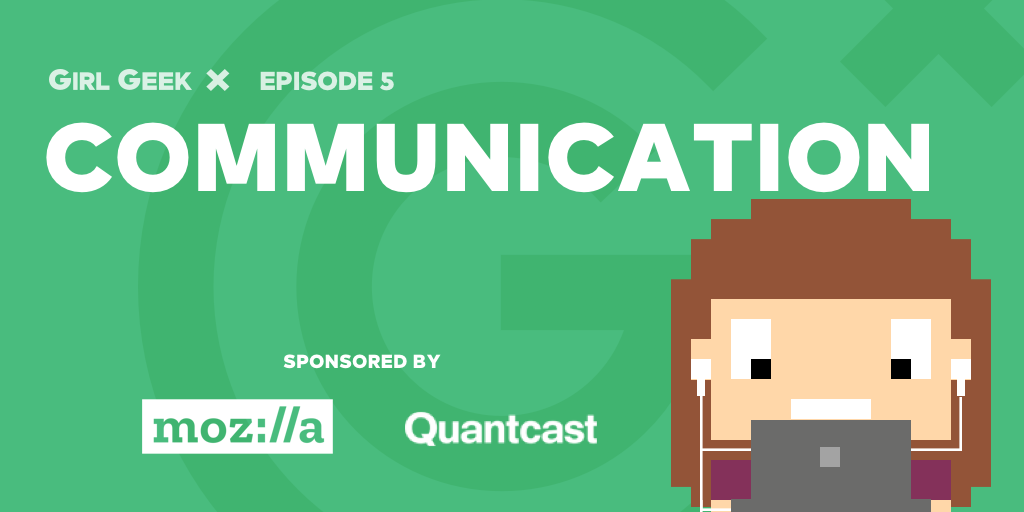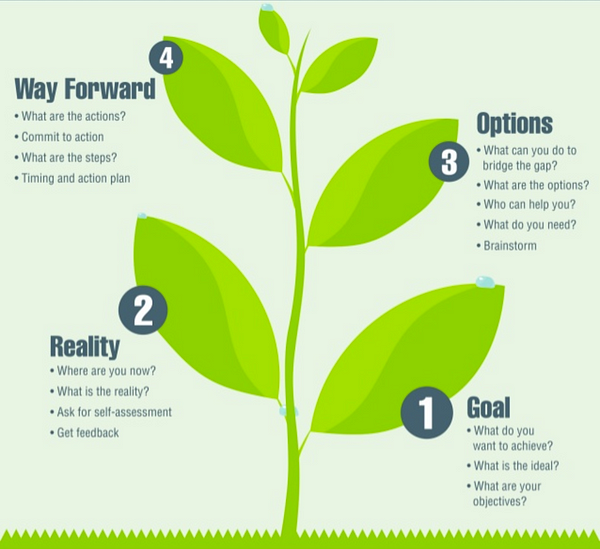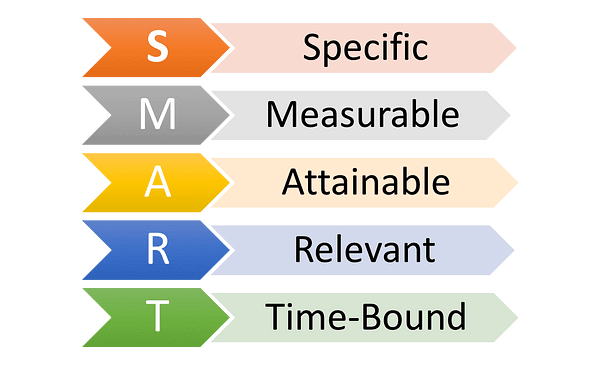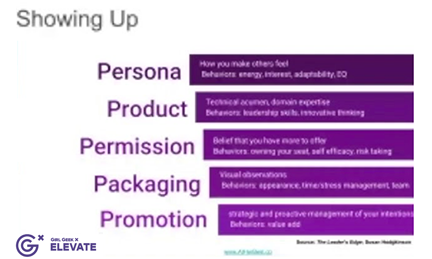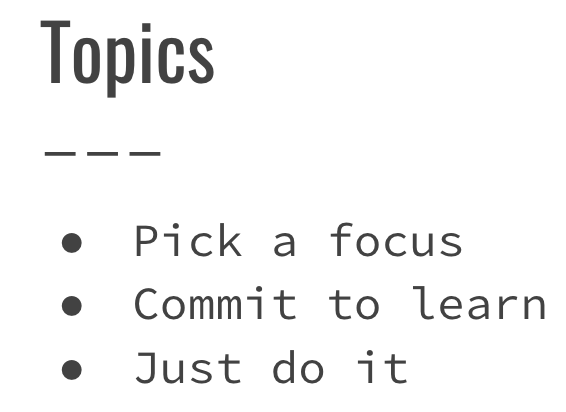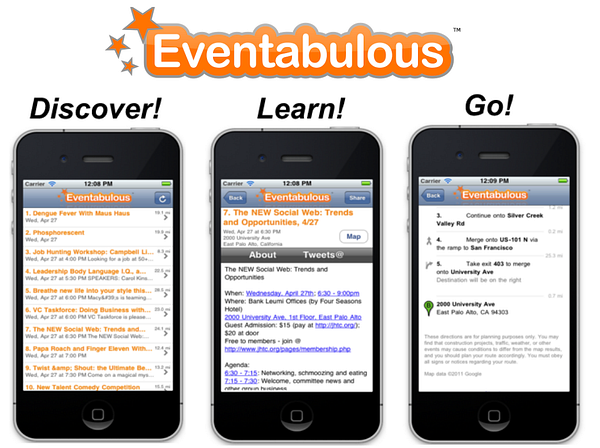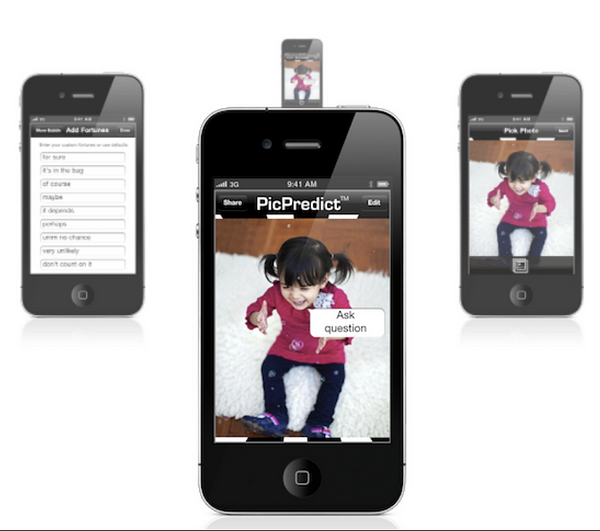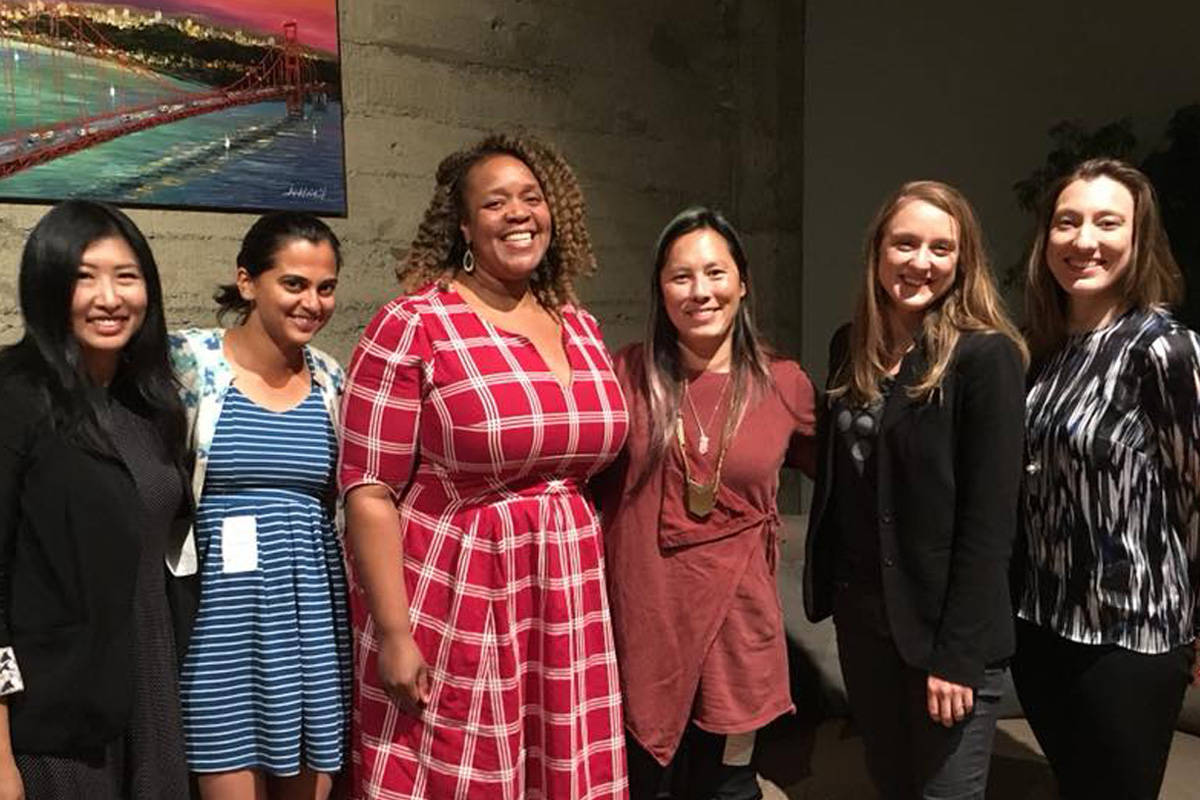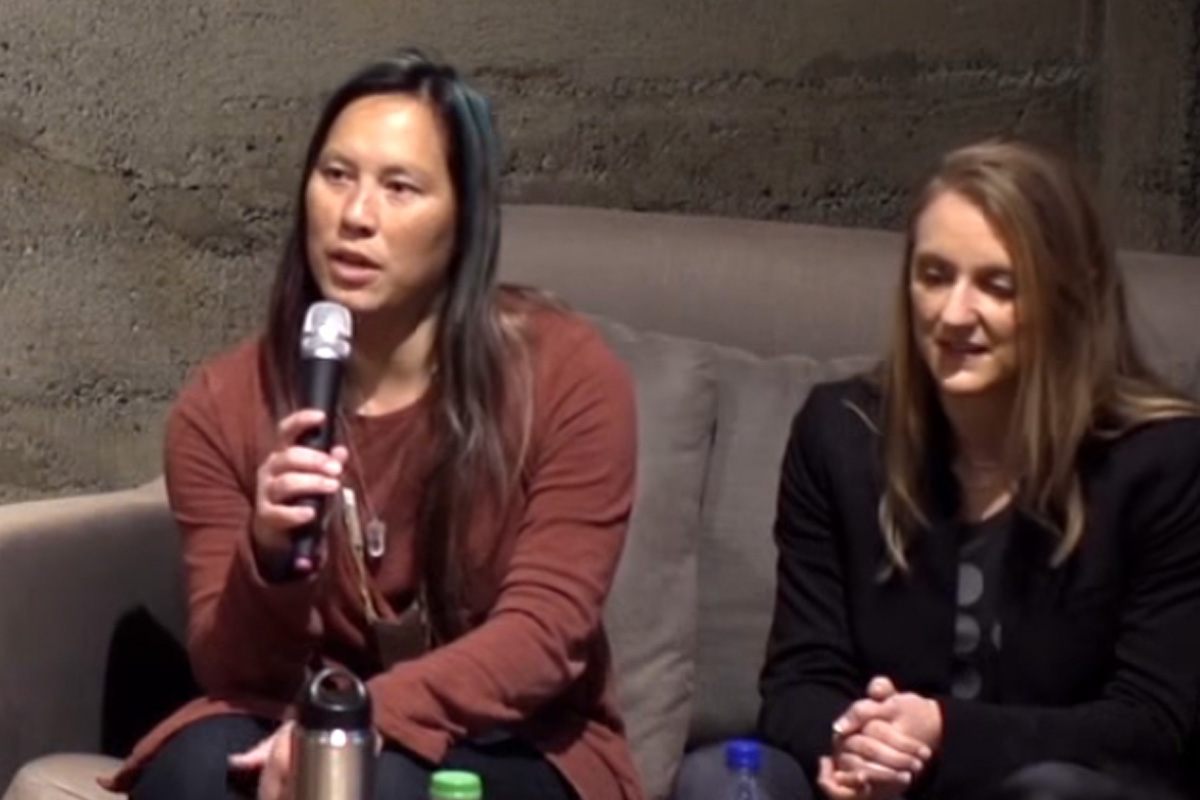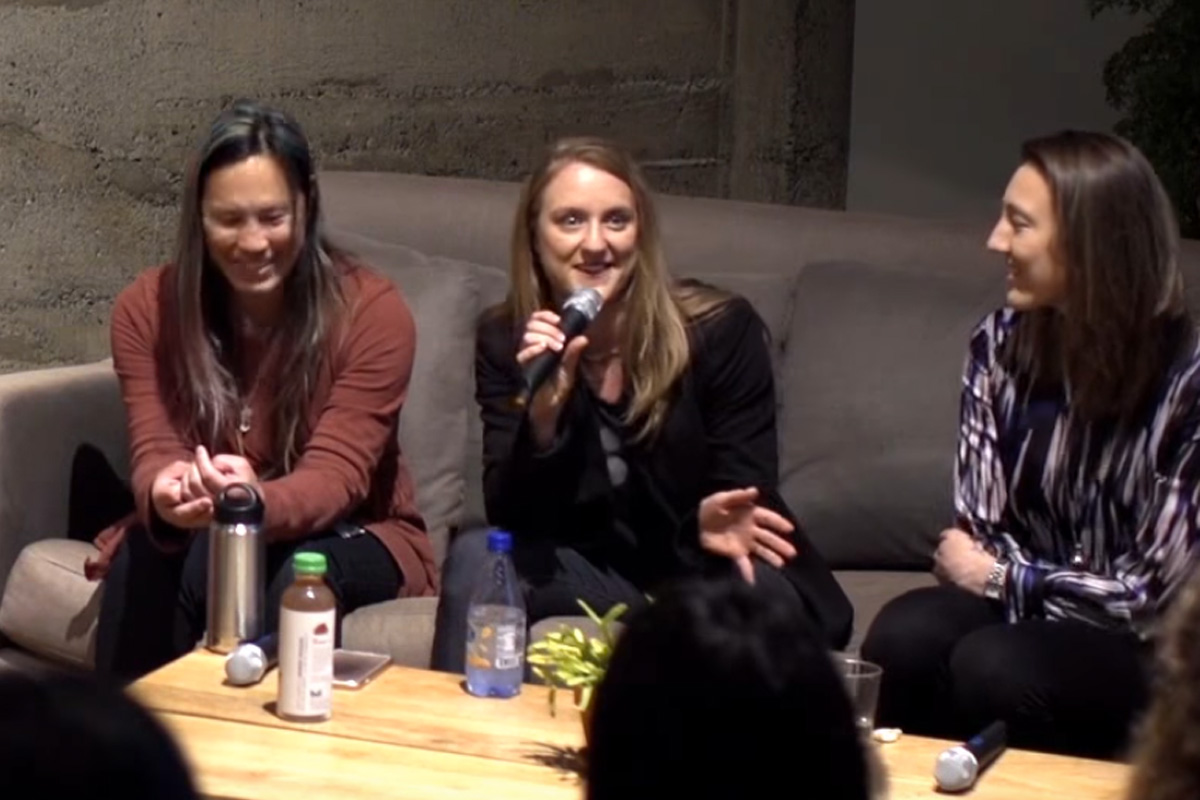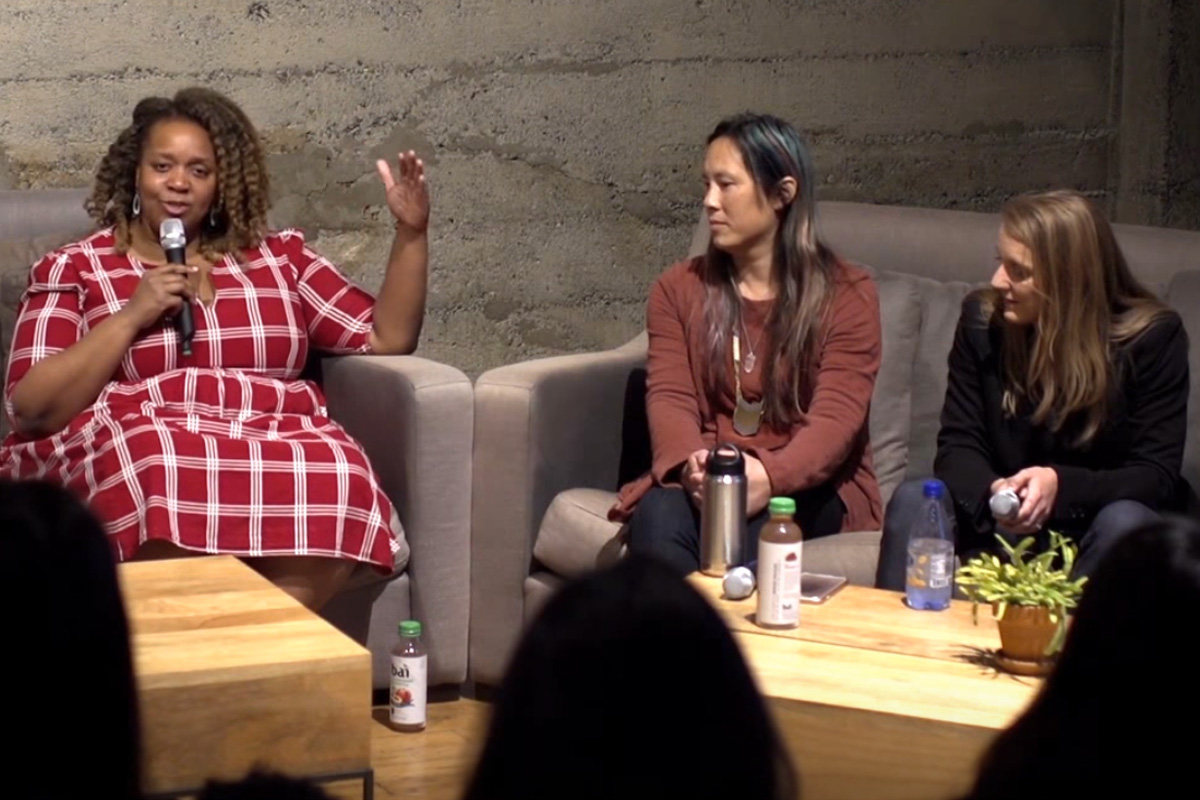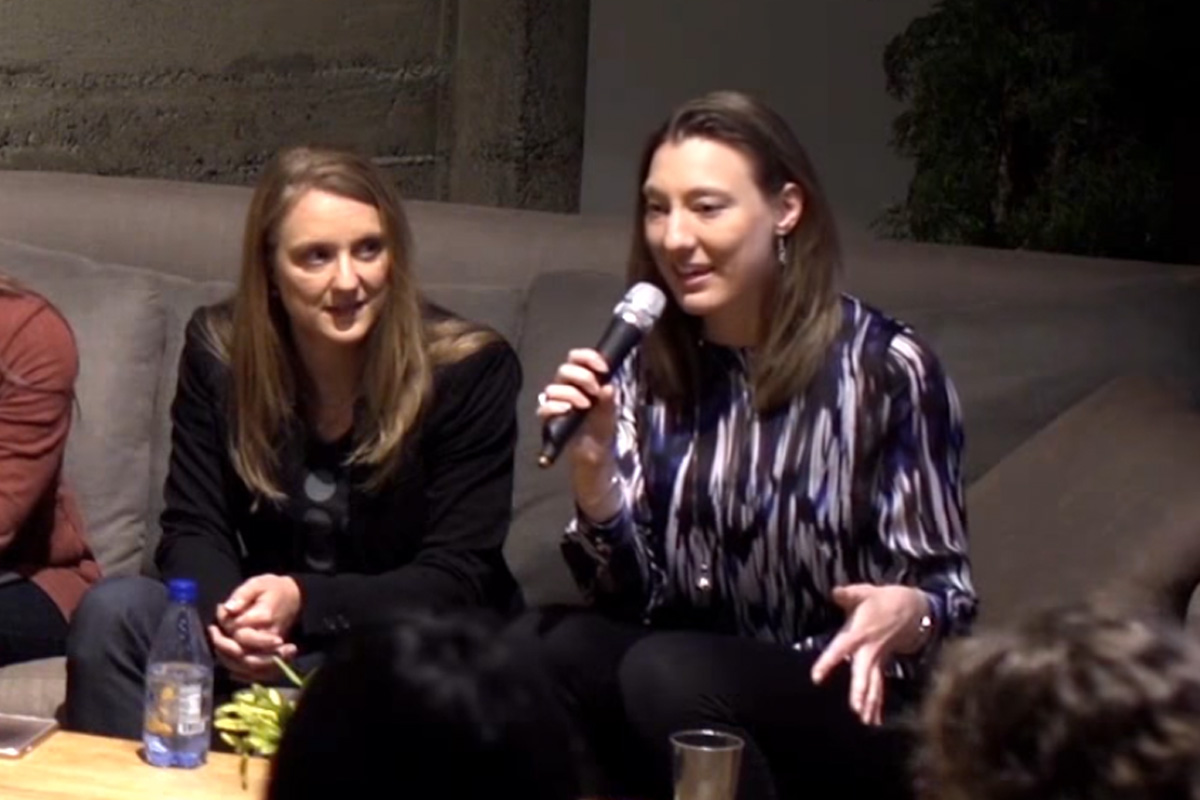Transcript
Angie Chang: Welcome to Girl Geek X podcast where we connect you with insights from women in tech. I’m Angie, founder of Girl Geek X and this podcast brings you the best of Girl Geek X dinners, events, and conferences, where we’ve been elevating women in tech for over 10 years.
Sukrutha Bhadouria: Hi, I’m Sukrutha, CTO of Girl Geek X.
Gretchen DeKnikker: I’m Gretchen, COO of Girl Geek X.
Rachel Jones: And I’m Rachel, the producer of this podcast.
Angie Chang: Today we’ll be talking about transitioning into managerial roles.
Rachel Jones: Yeah, so one thing that I noticed just listening back to a lot of our previous episodes is how much this topic just comes up naturally in conversations about completely different things. Do you guys have any guesses for why that might be?
Sukrutha Bhadouria: I think maybe because that’s when some of us noticed our biggest, you know, that switch to being uncomfortable again or being a beginner again. I think that’s probably why. What do you think, Gretchen?
Gretchen DeKnikker: Yeah, I totally agree. ‘Cause you sort of get there when you’ve mastered your role, right? And then, I mean, that’s what’s sort of flawed about becoming a manager in general, because the way that you get there is by being an awesome individual contributor and then you need this entirely different skill set. So you’re not qualified at all for the job that your supposedly really qualified for and I think it’s that “Oh my God, I was amazing,” and the next day you’re like, “Oh, I suck.” So I think that’s why it comes up a lot. What about you, Angie?
Angie Chang: So in the Silicon Valley, I hear some anxiety from women where they have been awesome in the area of tech that they’re in and then they get this opportunity to become a manager and then they have these conversations of “Is being an engineering manager going to be taking me away from technology, or is it going to be taking me to where I want to go?”, and having those conversations with themselves.
Sukrutha Bhadouria: I think it’s also a conversation time and again because there’s no real manual somehow on how to be a good manager, but you kind of learn it on the job by making mistakes. And even though people might try to prep you, you still only learn it by doing it, I think.
Angie Chang: I don’t think anyone in their childhood is like, “I wanna be a manger. I wanna be a middle manager.”
Gretchen DeKnikker: No, but they are like “I wanna be a boss.” Right, like there’s a difference. And being a manager, there’s nothing about being a manager that’s telling people what to do. That’s what you think it is, and that will make you a terrible manager if that’s what you think being a manager is.
Sukrutha Bhadouria: Yeah, and as a senior individual contributor, you can actually tell people what they need to do or break up the work, but then as a manager you’re supposed to step back and listen and let your team come up with the design and come up with what needs to be worked on. So you have to be a little bit more, listen more, which is hard ’cause you spent all this time growing into being the person who has an opinion and now you’re supposed to suppress it a little bit to let people grow.
Gretchen DeKnikker: Yeah. Your job as a manager is to empower your team, to remove obstacles to make sure they have what they need to make sure they have the right goals and all of the checkpoints to get there and none of that has anything to do with how awesome you were at your job before that.
Gretchen DeKnikker: And the hard thing is, is you’re like “I just wanna jump in and do it because I know I can do it better and faster than this person,” and to be like, “No.”
Rachel Jones: What are some other differences between manager roles and individual contributor roles?
Sukrutha Bhadouria: I think the validation of knowing how you’re doing, there’s a big difference there too. If you are, you know, making a sales pitch and then no customer decides to jump on or if you are writing code and you fixed a bug, you find out much more quickly, it’s more predictable to know how you’re doing.
Gretchen DeKnikker: And I think you get to a point where as an individual contributor, you can measure your output. You can measure these inputs are getting me these outputs. Eventually as a manager you sort of figure out how to measure the outputs of your team, but I think that takes a while to figure out. And so you just, you don’t get any validation. And for a while you really do suck. And so if you feel like you suck, it probably is because you do, but it’s hard to sort of… Because you also have these people staring at you like, “Okay, lead.” And you’re freaking out inside trying to pretend like you know what to do. Which I also think as a manager, learning how to say “I don’t know”, “Let’s figure this out”, or “What do you think?”, because you feel like as the manager you have to have the answers and your team will respect you so much more if you’re not fronting and trying to pretend like you do.
Angie Chang: At Elevate, our annual Girl Geek X virtual conference, Stitch Fix CTO Cathy Polinsky shares her thoughts on how a manager’s role is different from a software developer’s.
Cathy Polinsky: Let’s just talk about Software Developer vs. Manager. Because it is this really interesting thing that the things that help you be most successful as an engineer, are not necessarily the things that you need to do once you’re an engineering manager. And that’s something that we’re not sure…we talk about that a lot at my staff meeting; is that true for a lot of other fields because I get the impression that dynamic is not always as clear as it is in software developing. When you’re focusing a lot on coding and projects and building up your technology skills, those things are great and important to lean on so they understand the projects are going on track, but there’s a whole other aspect of how you’re managing people and projects and initiatives that you don’t necessarily always get to do as an individual contributor. And so it was a very challenging and different experience for me, but one that I really love. I feel like as a software developer, you get these CS highs. You solve some problem, you are excited about getting to a solution that works and that you can push out and deploy and that’s just exciting that you get to see that solution, you get to see people using it and you get to see the difference that you’re making. When you’re a manager and you’re not actually writing the hands on code and influencing through people, things take longer. You can’t always see a, “Hey I’m trying to give people advice and coaching them in this way, am I getting through to them? Is this working, am I shifting the team to be better or not?” It’s not that you can see that on a day to day basis, but that your impact is much broader and if you can stick through it and realize that it’s not the same as that everyday, every hour continuous feedback loop, that you find other ways to see your impact and that you can be really proud of the people and lives that you can influence.
Rachel Jones: Do these differences that Cathy outlined reflect what you’ve seen in your own experience?
Gretchen DeKnikker: I think it does. It took me a long time to realize that it was all my fault. If the team failed, if an individual failed, then it was all my fault and that shifting my thinking that way was what really helped me become a leader instead of just a manager. And figuring out, and then letting them know that too and being very explicit about this is, you know, if you failed it was because you did not have the resources, you did not have the time, you did not have the communication, or you had some sort of road block that I could have moved for you. And so it’s very rarely that they don’t have the ability, and it’s very rare they don’t have the motivation. It’s that there was something else going on; maybe it was a timeline plan, maybe you didn’t coordinate between two individuals for a hand off. But it’s always your fault if your team fails, and I think that’s the, for me, that was a light bulb.
Sukrutha Bhadouria: I think for me, I was thinking that it was fully my fault too early. Because there are times when people just don’t want to do their job, you know? They were just checked out and I think the way to solve that would have been to make sure I built the team to be the best functioning team and that meant managing people out if it’s not working out with them instead of me constantly trying–I spent too long trying really hard with the people who were just not into it.
Gretchen DeKnikker: Yeah.
Sukrutha Bhadouria: You know? They need to be equally invested as you, just because it’s taking a lot of the blame on me. So I feel I totally see what you’re saying, but for me to get to a point where I can be in a position that I can take full blame, I should build a team the right way.
Gretchen DeKnikker: Oh sure, and I think it’s the same, though, there’s some failure that happened, right? You failed to recognize that they weren’t the right person earlier, right?
Sukrutha Bhadouria: Yeah, of course.
Gretchen DeKnikker: And so it’s that, all of that is your responsibility and being able to take that on, and you did. Right? You said, “This person isn’t working out and I need to figure this out and get the right person in there.”
Sukrutha Bhadouria: Yeah, but I also learned people aren’t code. You can’t just change things and it’ll fall into place.
Gretchen DeKnikker: No.
Sukrutha Bhadouria: These are personalities, they are human beings, and you give feedback and have to give it some time to resolve and give chances up to a point. And if it doesn’t work, it doesnt’ work. You know?
Gretchen DeKnikker: Yeah.
Sukrutha Bhadouria: Actually shake hands and you’re like, “This is not working.”
Gretchen DeKnikker: Yeah, and you’re having those conversations along the way so that when you just really have that final conversation it’s not a surprise to anybody.
Sukrutha Bhadouria: Yeah, and I also felt like through that process I became a better reportee, you know. [inaudible 00:10:14] Yeah I was more effective to my manager, I understood how I could make their job easier. And so those are the learnings for me I would say. Have you ever had a person report to you that you felt was, you know, not fully invested and they were a little tough to manage?
Angie Chang: I feel that often times when I was a manager, but it was not something that I per se felt like I did a good job at. It was not what I went into the job looking to do.
Gretchen DeKnikker: Okay let’s break this down. Were they a direct report?
Angie Chang: Yes.
Gretchen DeKnikker: You hired them or you inherited them?
Angie Chang: Inherit.
Sukrutha Bhadouria: So there’s a big difference
Gretchen DeKnikker: So then yeah, that part sucks. So then what happened?
Angie Chang: The CEO was just like, “I just can’t handle these people so you have to handle them.”
Gretchen DeKnikker: Your story’s actually the most interesting one, because I think this happens a lot. And then you think, “Oh, I’m terrible as a manager,” right?
Sukrutha Bhadouria: And this was what I was alluding to earlier; when you take the blame too early on yourself when you had no control over the actual situation. And when you actually start to take control is when you can [inaudible 00:11:19]
Rachel Jones: A lot of times people who are becoming managers, it’s not the path that they sought for themselves. It’s just assumed to be the next step so they just take on that role and it might make the most sense for them or be something they want to do or be good for the people they’re managing. I definitely had an experience like that where just a fact of getting promoted meant that I was managing one person. And along with that there wasn’t any, “Here’s what to do,” or how to do this well.
Sukrutha Bhadouria: I think part of knowing it’s on you is empowering yourself to actually fix the problem. That’s the problem. As opposed to just being, “Oh this is on me, I’m stuck with it.” You have to feel like you can fix the problem.
Gretchen DeKnikker: So that’s a good segue into our next section with Zeesha Currimbhoy, who’s a director of engineering. We heard from her at a Branch Girl Geek dinner last year. She talks about the first few months of her transition from individual contributor as a manager and sort of the pitfalls and then how she found her way through it.
Zeesha Currimbhoy: The most challenging one was when I moved from an engineer kind of leadership role to actually running an entire organization with people who were once my peers now being my direct reports, and people who had years and years more experience than me, researchers, PhDs, technically more skilled specialists who now reported in to me and I had to figure out how to provide them the growth opportunities and mentorship while also planning out the entire road map of the organization. So that was by far… and with zero mentorship because I reported directly to the CEO who had no time. And so it was definitely by far the most challenging jump I’ve had to make in terms of different roles. And I think that the initial part of that journey was the most challenging because I couldn’t find my bearings. As an engineer, I still very much gravitated to an IC; I wanted to just go and code and I wanted to fix things. And that was not my role anymore. And I still very often found myself just wanting and itching to write the code and getting the credit for it because as a manager, you gotta give the credit. It’s your team’s work. You’re responsible for growing the team, getting out of their way as quickly as possible. And so I think the first couple of months in my new role was the most challenging until I figured out how to get the mentorship I needed. And then make sure that I was very open and honest with what I could or could not provide the team. So I could not directly tell a machine learning engineer how to actually build their models, because I didn’t have the experience myself. I can figure out, “Oh, you should use XGBoost vs something else.” And so I figured out how to get them the mentorship that they needed for them to be successful so that they could still respect me as their manager and I could take care of the other things for them. So that was the most challenging thing I had to deal with.
Rachel Jones: What can we learn from Zeesha’s experience?
Sukrutha Bhadouria: I think the first thing is when someone’s gonna be… as a CEO or leader in the company, if you’re gonna make someone a manager you need to make sure you’re providing them with the support, whether it’s external trainings or internally, or assigning them with a mentor. Because you don’t want to lose that person. I find that a lot of people tell me when they were first-time managers they didn’t have any coaching or training or mentorship. Even though I had access to trainings and mentors, it was still so hard so I can’t even imagine why companies, big or small, don’t have a more formal program, or at least a process in place of some kind.
Gretchen DeKnikker: I mean I think at startups, like early stage startups, there just are no resources for any sort of training. And I think most of what you do, especially really, really early stage, most of what you do day to day, you’re not qualified to do anything about it and everyone’s sort of… But I totally agree if you get a couple hundred employees, and you’re taking someone and making them a manager, and you’re not doing something to make them successful, you’re just throwing money away. That’s hard on them, it’s hard on the team, right?
Sukrutha Bhadouria: Yeah, it could impact productivity of the engineers too, right? So that’s a huge loss. I mean obviously not really small companies, but at least mid-size ones, a lot of them don’t seem to have training [crosstalk 00:15:51]
Gretchen DeKnikker: No. It should come a lot earlier than I see it coming. That is for sure. Advice out there in podcast land, people.
Angie Chang: Absolutely. You hear about it’s all trial by fire in startups and in companies that are less than a few hundred people you’re not gonna probably get any kind of support in your transition to a manager. It seems like there probably should be more services and products available to let these startups have resources to provide when you’re not a public company with many, many years of engineering management training in your books.
Gretchen DeKnikker: I mean it’s not that hard to have a one on one once a week with someone that you’ve made a manager and leave it for them. It’s their agenda, it’s their 30 minutes, you never reschedule it. They always know that they get those 30 minutes and they can come in and just be like, “This is the fucked up stuff that happened this week, what should I do about it?” It’s not that hard. You don’t need books, you don’t need an LMS system. You don’t need a lot, you just need to invest time in them. Because, you can only learn so much from this theoretical whatever. It’s like, “Okay well, I didn’t read in a book somewhere what to do when so and so goes on leave and so and so doesn’t like this other person and they don’t work well together but I need them to do these two things and there’s no one else to do it…” There’s no one that can really help you with the day to day whatever. I mean you can read all the books in the world, it’s not really gonna get you through that the way someone who’s like, “Oh yeah, I’ve kinda had something like that similar happen,” or, “Have you tried this…”
Rachel Jones: Right.
Angie Chang: Yeah, I think there have been some resources, like Harrison Metal runs a management class a few times a year. There’s now many engineering conferences and meet ups, I call them support groups, where managers from across companies get together and they talk about their common struggles around, what is it, pay leveling and managing their teams, as well.
Gretchen DeKnikker: Yeah. And as a manager too, as you go from role to role, you need to have different peer groups to turn to. When I went from being a founder into a COO role, I was for the first time in sort of this very supporting but very senior role. And I didn’t know how to navigate that, so I had to go make friends that weren’t founders ’cause my group were founders and they looked at it from a different vantage point than you do when you’re not the founder. And so I just had to go find some other women that were reporting directly to the CEO but weren’t founders. And that was awesomely helpful, actually. Even if you just get together and have a cup of coffee and commiserate, like, “This is the crazy stuff that happened this week,” or whatever.
Rachel Jones: Does anyone else have other pieces of advice for new managers?
Sukrutha Bhadouria: I think get a mentor, get multiple mentors. There’s that thing, right, build your personal board of directors. You need people who can just listen to you and give you advice. What’s funny is I felt like I wanted people who knew the people I was working with so they could give me relevant advice and that really worked for me. But sometimes you don’t even need that.
Angie Chang: I find management to be easier when you go into a job knowing that is part of your job description. And my experience has been, sure, I’ve been a manager since college of smaller teams and that worked out well. I was a manager of an editorial team. That worked out well. And then I had another job where when you are basically spinning up your own department and then suddenly asked to manage other departments, it becomes a little confusing and is not what you wanted and suddenly I was almost a, not resentful, but a reluctant manager. And that’s not good either.
Gretchen DeKnikker: Yeah, for anybody.
Sukrutha Bhadouria: Do you think you would have been less reluctant if you had, you know, people pulling in their weight equally?
Angie Chang: I guess what we didn’t realize and this is kind of like working at a tiny start up is we should have just hired more executives to manage [inaudible 00:20:03] instead of trying to shove them under my team which was entirely different department. And that was probably what I look back and I’m like, “Oh we should have just hired those VPs of this and that sooner instead of trying to make other teams suffer them.”
Gretchen DeKnikker: I think my advice is check your ego. I think that’s maybe the hardest part. And if you check your ego you’ll not jump in and try to do somebody else’s job for them, you’ll hire people that are better than you. You’ll get very comfortable with the fact that you couldn’t actually do their job for them, that they’re better than you at it. And then that’s good. And that they’ll go to lunch and be like, “She’s such an idiot, she totally couldn’t do my job,” and be okay with that because you remember what it was like, especially early in your career where every manager’s an idiot. At least, that seemed pretty common.
Gretchen DeKnikker: But I think that being less worried about what you look like and more worried about sort of what is getting produced, I think that will just, for me, it made things calmer. When I stopped realizing I didn’t have to act like a manager, and that it was okay to just sort of do it my way.
Sukrutha Bhadouria: So that brings us to our next quote. During our dinner with GroundTruth, Lauren Stephenson, who’s Director of Human Resources Business Partner, shared her playbook for new managers.
Lauren Stephenson: I think one of the first things you need to do when you’re talking about defining your strategy as a manager, is to step back and check yourself and say, “Why do I want to assume this responsibility,” right? A lot of times people end up getting into managerial positions simply because it’s the next step on the career progression ladder. And to me, assuming a managerial responsibility is a great kind of privilege; to be responsible for, you know, talent and people’s growth and development, and being tasked to actually carry out the business objectives. So check yourself and with that, you’re gonna hear me say that a few times, is take a step back and say, “What is it that I’m trying to accomplish as being a leader?” And be intentional about that. When you’re thinking about, “I am responsible for building a team. I am responsible for leading a team. I am being tasked with this, so what do I need to do? Why am I actually signing up to be a manager?” Moving away from, after you’ve stepped back, and you’re like, “Okay this is why I want to manage,” you start to think about more of the strategic side of actually defining your managerial playbook. And that’s thinking about how do I start to assess the landscape of the company? You’re gonna start thinking about I need to talk to my C-suite, I need to understand what our business objectives are. That’s going to help you determine the type of team that you need to build. So you’re stepping back and you’re like, “What are we actually trying to accomplish?” Assess the landscape. And then from there you’re like, “Okay, what type of talent do I need to bring in the door to actually drive that objective?” And notice when I said talent, I said the right talent. What does that mean? I didn’t say I need talent from top university, I need talent that looks like me, right? You need the right talent, and when you’re thinking about furthering your agenda as a company, connecting to your consumer base, if you look out most of the consumers don’t all look the same. They don’t talk the same. They don’t come from the same walks of life. You need to think about fostering a diverse workplace, fostering diverse thought, bringing in people who come from different experiences, because that’s how you’re going to build a well rounded team. That’s how you’re going to be able to connect with your consumer base and actually be able to create an experience that people are actually want to gravitate towards. So that’s like the second thing. And then once you have that you’ve started thinking about he type of talent that you need, you’re going to then move into thinking about what type of resources do we need? What type of tools do we need? What type of processes do we need? What teams are we gonna be working with? And then from there, what is the targeted objective or outcome? How do I assess if all of this was successful once I’ve sat back and kind of defined what that strategy is?
Rachel Jones: Do you think that these steps can be useful to new managers?
Sukrutha Bhadouria: That would have helped me to step back and think about exactly what I wanted to achieve out of this and then try to achieve it as opposed to just, you know, getting overwhelmed with all that’s going on. Her comment about being intentional about it and feeling responsible for building the team is something for sure I resonate with. What do you think, Gretchen?
Gretchen DeKnikker: I mean I think it’s kind of all the steps, and we could spend a whole bunch of time just talking about each individual step. I love that she’s, “Do you even want to be a manager?” Right? Stop and reflect for a minute. Why do I want this? Because it’s a promotion or because I actually want a different job than I have today? I think particularly in engineering roles, this becomes a really big thing. I have a friend now who doesn’t, she keeps looking, she’s very senior and she doesn’t want to manage a team. So she can’t really get a job because no one wants her skill level without putting a team underneath her. And so she’s really struggling with it because she’s in marketing and that’s not normal to do in marketing.
Sukrutha Bhadouria: I liked her comments about fostering a diverse workplace and not just hiring people who look like you. I really like that. What did you think, Angie?
Angie Chang: Yeah, I think she brought up a really great point in looking to build an inclusive team.
Gretchen DeKnikker: And I think understanding that you have…you’re learning and you don’t need to bring more pressure on yourself, but at the same time this person’s career is in your hands right now. And if they’re gonna spend two years working underneath you while you suck, and you’re more focused on yourself than you are on the team, then that’s where people get stuck in their careers. And if you are that person, and you’ve had that manager that just doesn’t seem to care and you move on, but sort of finding that out quickly. Because a lot of, especially, early managers question themselves on having people taken off their team and they just think, “Oh this person wants a job,” and it’s, well actually, if you step back and you think about it, they want to be happy and content and productive and to be feeling good about what they do every day. And right now they’re not getting that in this role. And so even if it will really suck for them to not have a job for a little while, you’re giving them a better future than they’re gonna get if you’re just… a paycheck is not enough, right?
Rachel Jones: Does anyone have any final thoughts on becoming a manager?
Angie Chang: As a reluctant manager who has managed, I think being a manager is a great privilege. It’s not one to be taken lightly. Unfortunately, when you’re in a small startup that’s struggling to stay alive, you end up with more teams under you than you would like. And I will probably have to say everyone that I’ve been managing for a few years probably is like, “Oh my god, she was a terrible manager.” That’s ’cause I had my job too. And hopefully in the future when I manage more people, it’s more intentional and in the same department. And I think people should be managers, not all of them, but more people than there are currently. I think there’s a lot of really talented women who are in engineering who could become engineering managers sooner and take that step up and really change the system by managing it and hiring and making the change we need to see in engineering. I don’t want to scare them away from it, I think they probably can find the resources to succeed.
Sukrutha Bhadouria: Yeah, and be patient with what success means, right? It’ll take a while before you actually see success. There’s no greater joy when you see someone who you’re managing or mentoring is getting promoted or getting to the next level that they want. It’s as exciting as, you know, getting your big project or product shipped and customers using it. And so I’ve had so much joy, and like Angie said, it’s a privilege. So I definitely had the privilege of growing a lot of people and mentoring a lot of people. So there are these other experiences along the way that will really make it feel like it’s really, really hard and not worth it. But I will say if you’re patient and you wait it out, there are going to be these big wins that are going to feel like it’s all worth it.
Gretchen DeKnikker: I love being a manager. Because I’ve been doing it for so long, though, now it’s challenging people and giving them something and watching them stretch themselves. Like you were saying, that’s just so awesome. And helping them develop. And even if, you know in a smaller company, so if they leave to go to another company, that you’re sort of helping in their journey. And the amount of trust that you can build if you are genuinely interested in developing them a as a human, it’s really awesome and they stay in touch with you. I can’t imagine doing something else. That’s the thing that I enjoy more than an actual job. I enjoy developing the humans. I don’t know, I say go for it if it’s sounds fun.
Rachel Jones: I think that my big takeaway from this conversation is how becoming a manager should always be coupled with having really strong mentorship. You shouldn’t be walking into this role blind. You should definitely have people with experience who know you or your work, or have done similar things who can advise. And like Gretchen said, yeah, it’s not that every company needs to invest in a super expensive, complicated manager training system, it could really be as simple as just partnering with people, checking in with them and making sure that they have what they need to do that job well.
Sukrutha Bhadouria: And if you don’t have those resources in your company, then find people in your network or build your network to get them.
Gretchen DeKnikker: Maybe come to a Girl Geek dinner and find people facing similar problems. Go to w- no.
Angie Chang: Thanks for listening to this episode of the Girl Geek X podcast. We’ll be back soon with more advice from women in tech. This episode is brought to us by Branch. Branch provides the most complete deep-linking solution for brands to create optimized mobile user experiences that drive app growth and conversion as well as user engagement and retention. This episode is brought to you by GroundTruth, the leading global technology platform driving in store visits and sales by leveraging location as the primary source of intent.
Rachel Jones: This podcast is produced by me, Rachel Jones. To learn more about Girl Geek X, or buy tickets to our next dinner, visit Girlgeek.io. You can also find video and transcripts from the events we talked about today. If you’re interested in hosting a Girl Geek dinner, contact sponsors@girlgeek.io.



